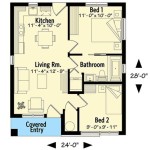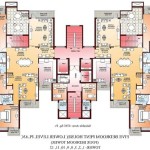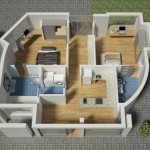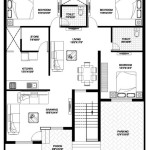5 Bedroom Modular Homes: Floor Plans and Considerations
Modular homes, increasingly a popular alternative to traditional site-built construction, offer a compelling combination of customization, efficiency, and cost-effectiveness. Among the various configurations available, the 5-bedroom modular home presents a particularly attractive option for larger families, multi-generational households, or those who require ample living space for hobbies, home offices, or guests. This article will delve into the intricacies of 5-bedroom modular home floor plans, exploring key design elements, customization possibilities, and factors to consider when selecting the ideal plan.
Understanding the Core Components of a 5-Bedroom Modular Home
A 5-bedroom modular home, at its most fundamental, is constructed from multiple factory-built modules that are transported to the building site and assembled on a permanent foundation. These modules, built to stringent quality control standards within a controlled environment, minimize material waste and construction delays often associated with traditional building methods. A typical 5-bedroom modular home floor plan generally incorporates several key features. These features often include multiple living areas, a spacious kitchen, a master bedroom suite with an en-suite bathroom and walk-in closet, four additional bedrooms, additional bathrooms, and potentially a utility or laundry room. The overall square footage of a 5-bedroom modular home can vary considerably depending on the specific design, but typically ranges from 2,000 to well over 3,000 square feet.
The floor plan design must effectively balance functionality and aesthetics. Careful consideration is given to the placement of bedrooms for privacy, the flow of traffic between living areas, and the integration of natural light. Common architectural styles adapted to 5-bedroom modular homes include ranch-style, two-story designs, and even more contemporary styles with open floor plans. The modular construction process allows for significant customization, enabling homeowners to tailor the floor plan to their specific needs and preferences.
The construction process also influences the ultimate design options. The modular construction imposes restrictions on the size and shape of individual modules, and these restrictions affect the range of possible final floor plan variations. This is because the modules must be transportable and must adhere to transportation width and height limitations. However, manufacturers are adept at creating sophisticated modular designs that overcome these restrictions, and many manufacturers offer hundreds of customizable floor plans. This allows home buyers to find a design that fits their ideal living situation.
Exploring Key Floor Plan Design Considerations
Choosing the right floor plan for a 5-bedroom modular home involves evaluating several key design considerations. These considerations revolve around lifestyle, budget, location, and future needs. Therefore, it is important to take a methodical approach when evaluating all the options.
Lifestyle and Family Needs: The floor plan should align with the family's lifestyle and daily routines. For example, a family with young children might prioritize having all bedrooms on the same floor or a dedicated playroom close to the main living area. A multi-generational household might require a separate living suite with its own bathroom and kitchenette. The number of bathrooms is another crucial consideration. For five bedrooms, at least three bathrooms are generally recommended to avoid morning congestion. The need for a home office, a dedicated space for hobbies, or a large entertainment room should also be factored into the design.
Budget and Square Footage: The size of the home directly impacts its cost. While modular homes are generally more cost-effective than site-built homes, the square footage will still be a primary driver of the final price. Homeowners need to establish a clear budget and identify the essential features they require. It may be necessary to prioritize certain features over others to stay within budget. Consider the total cost of ownership, which includes not only the purchase price of the home but also ongoing expenses such as property taxes, insurance, and utility bills.
Lot Size and Orientation: The size and shape of the building lot will impose constraints on the floor plan. A narrow lot may necessitate a two-story design, while a larger lot allows for a sprawling ranch-style home. The orientation of the home on the lot is also important for maximizing natural light and energy efficiency. Consider the direction of sunlight and prevailing winds when choosing the floor plan. Proper orientation can help reduce heating and cooling costs throughout the year.
Future Needs and Flexibility: Homeowners should consider their future needs when selecting a floor plan. Will the family be expanding? Will elderly parents be moving in at some point? Selecting a floor plan that offers flexibility and adaptability is essential. For instance, a spare bedroom could be converted into a home office or a playroom as needed. A bonus room above the garage could be finished later to add extra living space. Building a home that can adapt to changing needs can save you from the costs and inconvenience of moving in the future.
Examining Popular 5-Bedroom Modular Home Floor Plan Styles
Various floor plan styles cater to different preferences and needs. Understanding the characteristics of popular styles can help homeowners narrow down their options and find a plan that aligns with their vision. These variations include two-story designs, ranch-style designs, and open-concept designs.
Two-Story Designs: Two-story modular homes are ideal for maximizing space on smaller lots. They efficiently utilize vertical space, providing ample living area without requiring a large footprint. In a 5-bedroom configuration, the master suite is typically located on the upper level, along with the other bedrooms. The main floor usually encompasses the living areas, kitchen, and dining room. Two-story homes offer a clear separation between living and sleeping areas, which is preferred by many families. Some designs include a finished basement, adding even more living space to the home.
Ranch-Style Designs: Ranch-style homes are characterized by their single-story layout and sprawling design. They are well-suited for larger lots and offer accessibility for individuals with mobility issues. In a 5-bedroom ranch-style modular home, the bedrooms are typically arranged along one wing of the house, while the living areas are located in the center. Ranch-style homes are known for their open floor plans and easy flow between rooms. They are also generally easier to maintain than two-story homes, as everything is on one level.
Open-Concept Designs: Open-concept floor plans are increasingly popular for their airy and spacious feel. They typically feature a combined living room, dining room, and kitchen area, creating a central hub for family activity. In a 5-bedroom modular home with an open-concept design, the bedrooms are usually located off of this main living area for increased privacy. Open-concept designs are ideal for entertaining and allow for easy supervision of children. They also tend to maximize natural light and ventilation, creating a bright and comfortable living environment. However, open-concept designs may not be suitable for those who prefer more separation between living areas.
In addition to these common styles, other variations exist, such as Cape Cod-style homes and contemporary designs with unique architectural features. Homeowners should explore the different options and choose a style that reflects their personal aesthetic and functional needs.
Customization Options and Enhancements
One of the significant advantages of modular homes is the ability to customize the floor plan and incorporate various enhancements. This allows homeowners to create a home that truly reflects their individual style and preferences. The range of customization options available is extensive, from altering the layout of rooms to selecting finishes and fixtures.
Layout Modifications: Modular home manufacturers offer a wide range of floor plan options, and many are willing to make modifications to suit specific needs. This could involve expanding the master suite, adding a home office, or reconfiguring the kitchen layout. Homeowners can work with the manufacturer to create a custom floor plan that perfectly integrates all the desired features. Some manufacturers offer virtual design tools that allow homeowners to visualize the changes before construction begins.
Premium Finishes and Fixtures: The ability to choose premium finishes and fixtures is a critical element of customization. Homeowners can select from a wide range of flooring options, including hardwood, tile, and carpet. They can also upgrade the kitchen countertops to granite or quartz and choose high-end appliances. Bathroom fixtures, such as faucets, showerheads, and toilets, can also be customized to match the homeowner's style. Choosing high-quality finishes and fixtures can significantly enhance the aesthetic appeal and resale value of the home.
Energy-Efficient Upgrades: Incorporating energy-efficient features is another important aspect of customization. Modular homes are already inherently energy-efficient due to their tight construction, but homeowners can further enhance energy performance by adding features such as Energy Star-rated appliances, high-efficiency windows, and increased insulation. Solar panels can also be installed to generate renewable energy and reduce electricity bills. These energy-efficient upgrades can significantly reduce the home's environmental footprint and save money on utility costs over the long term.
Exterior Enhancements: Customization options also extend to the exterior of the home. Homeowners can choose from a variety of siding materials, including vinyl, wood, and fiber cement. They can also add architectural details such as porches, decks, and dormers. Landscaping and exterior lighting can further enhance the curb appeal of the home. The possibilities for exterior customization are virtually endless, allowing homeowners to create a home that is both functional and aesthetically pleasing.
Careful planning and attention to detail are essential when customizing a 5-bedroom modular home floor plan. Homeowners should work closely with the manufacturer and consider their long-term needs and preferences. By taking the time to customize the floor plan and incorporate desired enhancements, homeowners can create a home that is truly unique and perfectly suited to their lifestyle.

5 Bedroom Floorplans My Jacobsen Homes Of Florida

Lee Floor Plan Modular Homes Austin

Triple Wide Mobile Home Floor Plans Las Brisas Floorplan Modular

Big Family Check Out These 5 Bedroom Mobile Homes The Mhvillager

The Top 18 Five Bedroom Prefab Homes

Triple Wide Floor Plans Mobile Homes On Main

290 Narrow Lot Ideas House Floor Plans

Kempton The Home Az

Floor Plans Austin Tx Modular Homes

Image Result For Five Bedroom Ranch Modular House Plan Mobile Home Floor Plans Pole Barn








